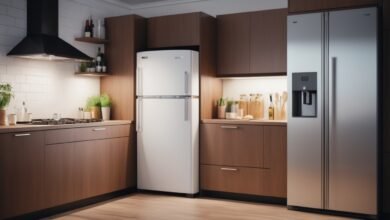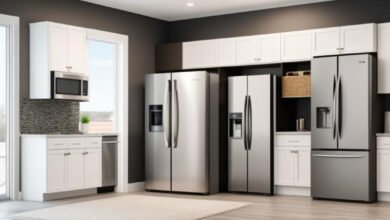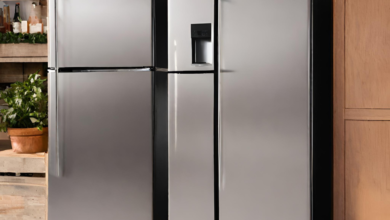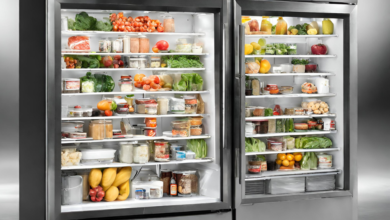Smart Home Appliances for Seamless Living: Revolutionizing Refrigerators
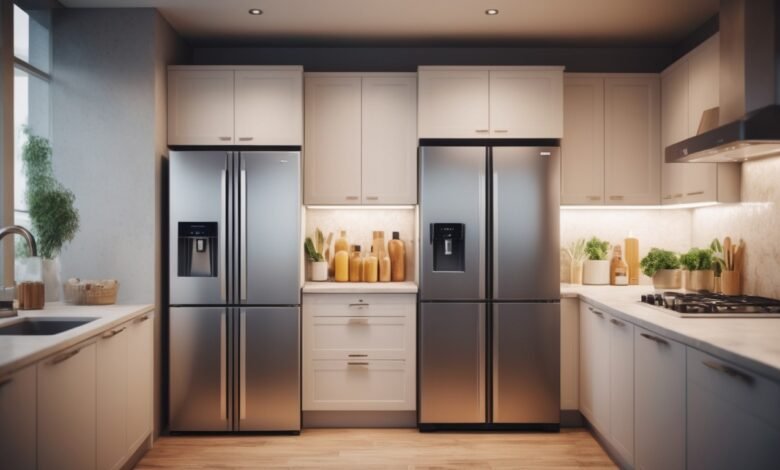
In the rapidly evolving landscape of smart home technology, the integration of intelligent appliances has become a key component in enhancing our daily lives. Among these innovations, smart refrigerators stand out as a pinnacle of convenience and efficiency, seamlessly blending advanced technology with the essential functionality of preserving and storing our perishables. In this comprehensive blog, we will explore the intricate world of smart refrigerators, delving into their features, benefits, and the transformative impact they have on our overall living experience.
I. The Evolution of Refrigeration Technology
A. From Iceboxes to Smart Fridges
The journey of refrigeration technology dates back to the humble icebox, gradually evolving into the modern marvels we now refer to as smart refrigerators. The integration of smart capabilities has not only enhanced the cooling efficiency but has also opened up a plethora of possibilities for users.
1. Iceboxes: The Precursors
Iceboxes, the predecessors of modern refrigerators, relied on blocks of ice to cool their interiors. This early form of refrigeration laid the foundation for subsequent innovations.
2. Conventional Refrigerators
The transition from iceboxes to conventional refrigerators marked a significant shift. These refrigerators employed mechanical cooling systems and were more efficient in preserving perishable items.
3. Emergence of Smart Technology
With the advent of smart technology, refrigerators evolved beyond mere cooling devices. The integration of IoT and AI ushered in a new era of intelligent appliances that could adapt to user preferences and provide a range of innovative features.
II. Features That Redefine Refrigeration
A. IoT Connectivity
One of the defining characteristics of smart refrigerators is their seamless integration into the Internet of Things (IoT) ecosystem. These refrigerators can connect to the internet, enabling users to monitor and control various functions remotely through dedicated mobile apps.
1. Remote Temperature Control
Smart refrigerators allow users to adjust the internal temperature remotely. This feature proves invaluable when making real-time adjustments based on the contents or when preparing for an extended absence.
2. Inventory Management
IoT connectivity extends to inventory management, with smart fridges equipped with cameras that capture and catalog the contents of the refrigerator. Users can access this information from their smartphones, making grocery shopping more efficient and reducing the chances of overlooking items.
B. AI-Powered Intelligence
1. Adaptive Cooling
Artificial Intelligence (AI) algorithms play a crucial role in optimizing cooling efficiency. Smart refrigerators with adaptive cooling capabilities can intelligently adjust temperature settings based on usage patterns, ensuring optimal conditions for various types of food items.
2. Food Recognition
Advanced AI enables smart fridges to recognize different food items stored within. This not only aids in inventory management but also contributes to energy efficiency by suggesting ideal temperature settings for specific items.
C. Energy Efficiency
1. Eco-Friendly Refrigerants
Smart refrigerators often incorporate eco-friendly refrigerants, contributing to sustainability efforts. These refrigerants have a lower environmental impact while maintaining high cooling efficiency.
2. Energy Consumption Monitoring
Users can monitor the energy consumption of their smart refrigerators in real-time. Detailed insights into energy usage empower individuals to make conscious decisions, fostering a more sustainable and eco-friendly lifestyle.
III. Integration with Smart Home Ecosystem
A. Seamless Connectivity
1. Interconnected Appliances
Smart refrigerators seamlessly integrate with other smart home devices, creating a unified ecosystem. For example, when the refrigerator detects low stock of a particular item, it can automatically generate a shopping list on a connected device or notify the user through a smart home assistant.
2. Smart Home Automation
Integration with smart home automation systems allows users to create custom scenarios. For instance, a “Good Morning” scenario could involve the smart fridge communicating with the coffee maker to start brewing as soon as the user opens the refrigerator door in the morning.
B. Voice Control
1. Integration with Virtual Assistants
Many smart refrigerators support voice control through popular virtual assistants like Amazon Alexa and Google Assistant. This hands-free functionality enhances accessibility and convenience for users, allowing them to check the status, add items to the shopping list, or adjust settings using voice commands.
2. Natural Language Processing
Advancements in natural language processing enable smart refrigerators to understand and respond to more complex commands. Users can interact with their fridges in a conversational manner, asking questions about food expiration dates or receiving recipe recommendations based on available ingredients.
IV. Enhanced User Experience
A. Interactive Displays
1. Touchscreen Panels
Smart refrigerators often feature interactive touchscreen panels on the door. These panels serve as a centralized hub for controlling various functions, displaying recipes, and even streaming content. The intuitive interface enhances user experience, making the refrigerator a multifunctional device.
2. Notifications and Reminders
The interactive displays can show notifications and reminders, such as expiration dates, upcoming events, or maintenance alerts. This proactive approach helps users stay organized and ensures the freshness of their food items.
B. Smart Applications
1. Recipe Suggestions
Built-in applications provide recipe suggestions based on the available ingredients in the refrigerator. Users can explore new culinary possibilities, making the cooking experience more creative and enjoyable.
2. Calendar Integration
Smart refrigerators often integrate with digital calendars, allowing users to keep track of important dates, appointments, and events. This integration adds another layer of convenience by centralizing information in a commonly accessed location.
V. Security and Privacy Considerations
A. Biometric Access
1. Fingerprint Recognition
To enhance security, some smart refrigerators come equipped with biometric access control, such as fingerprint recognition. This ensures that only authorized individuals can access the contents of the refrigerator.
2. Privacy Controls
Manufacturers prioritize user privacy by implementing robust security measures and giving users control over data sharing settings. Users can manage permissions for different features, ensuring a secure and personalized experience.
VI. Future Trends and Innovations
A. Quantum Computing in Refrigeration
1. Optimized Energy Consumption
The integration of quantum computing in refrigeration systems holds the promise of further optimizing energy consumption. Quantum algorithms can analyze and process data at unprecedented speeds, leading to more efficient cooling processes.
2. Enhanced AI Capabilities
Quantum computing’s computational power can enhance AI capabilities, enabling smart refrigerators to provide more accurate food recognition, personalized recommendations, and adaptive learning.
Conclusion
In conclusion, smart refrigerators represent a significant leap forward in the realm of home appliances. Their integration of IoT connectivity, AI intelligence, and seamless interaction with the broader smart home ecosystem redefine the way we approach food storage and management. As these technologies continue to evolve, the future of smart refrigerators holds exciting possibilities, promising not only increased efficiency and convenience but also a more sustainable and interconnected way of living. Embracing these innovations ensures that our homes become more than just living spaces – they become intelligent hubs that cater to our needs with precision and sophistication.

